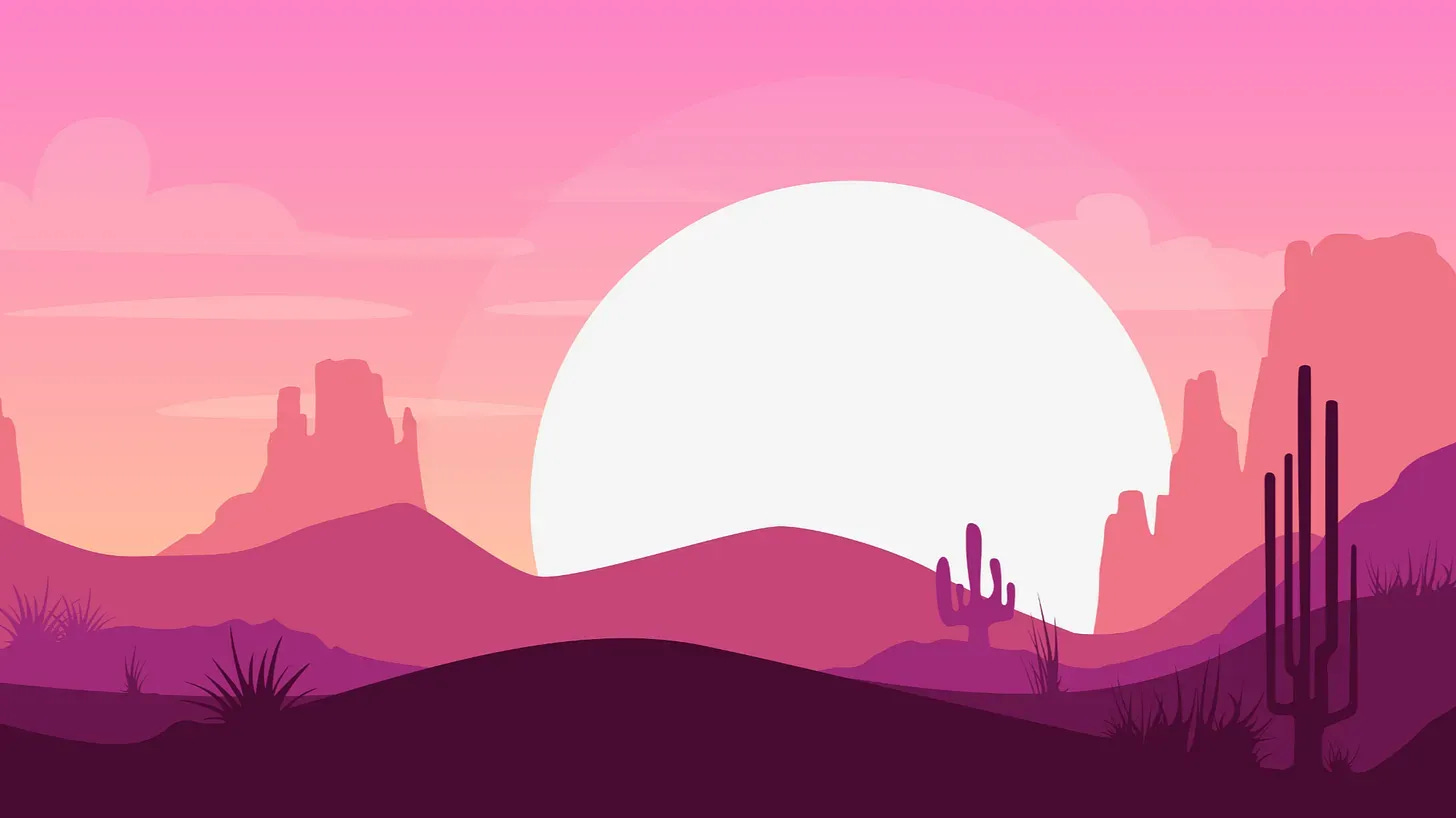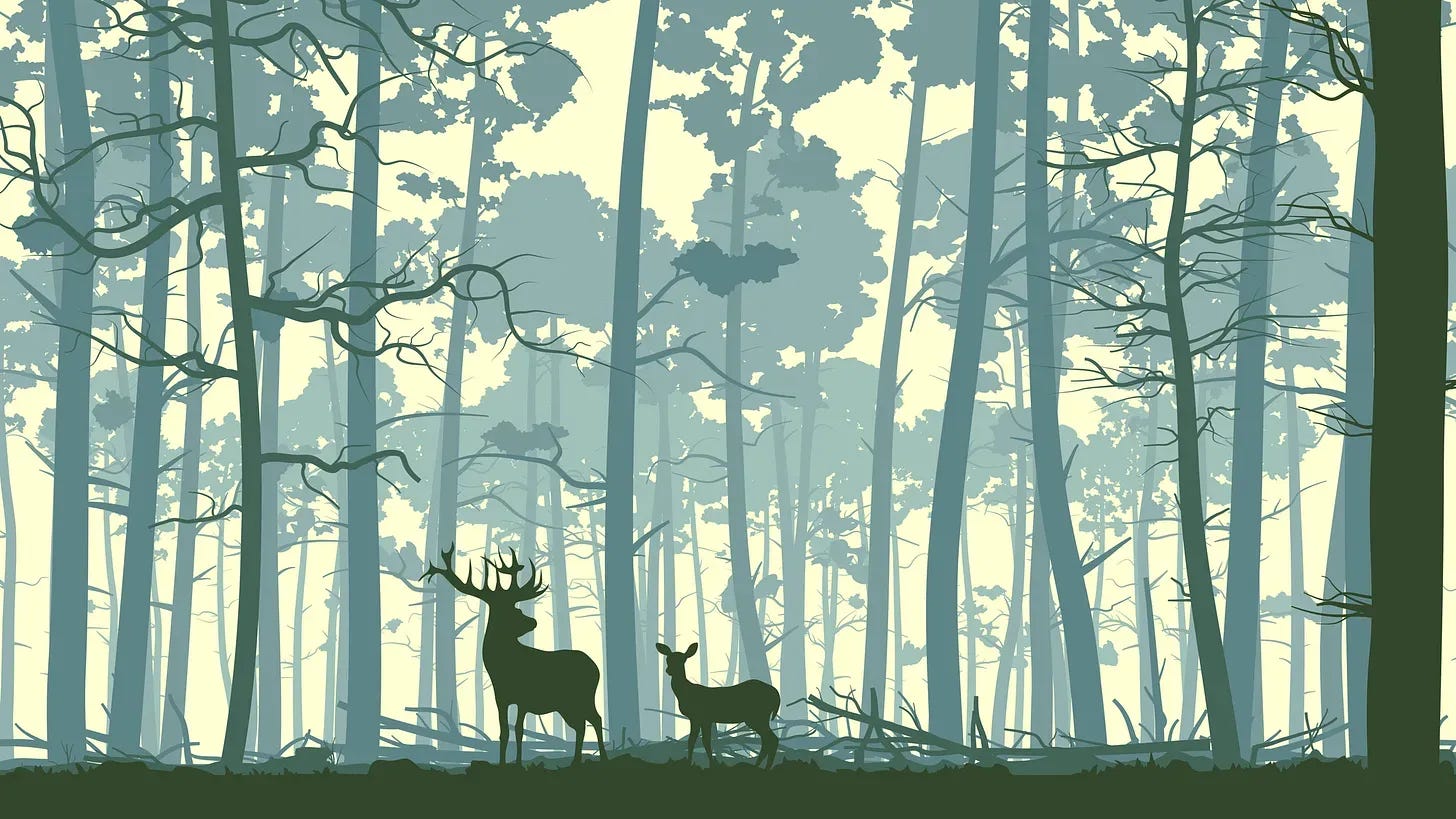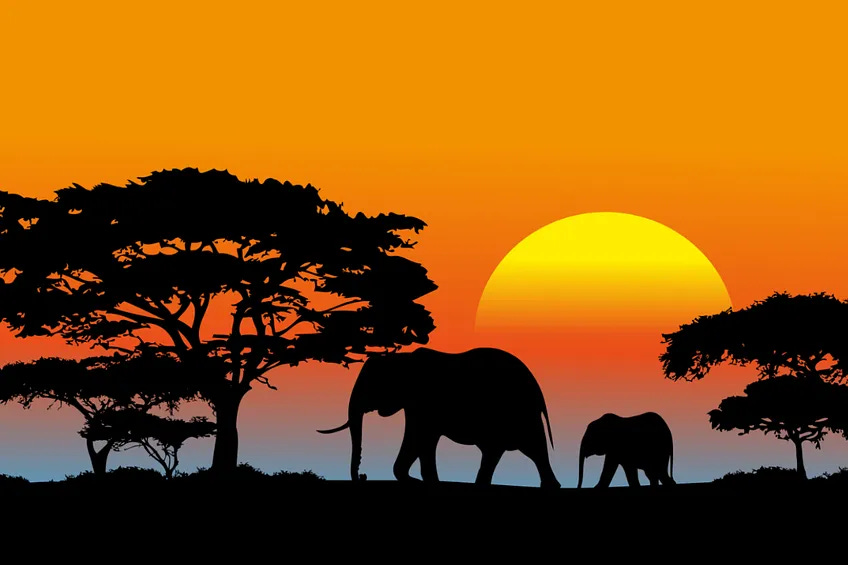Writing in Your Author Ecosystem
How different Author Ecosystems manifest in both fiction and non-fiction writing.
Writing has always been a deeply personal journey, yet for decades, authors have been squeezed into narrowly defined boxes of genre, style, and approach. Traditional publishing wisdom suggested a one-size-fits-all model of storytelling. You learn the rules, then follow the formula, and success will follow. But what if the key to unlocking your true writing potential lies not in conforming to external expectations, but in understanding your own unique Author Ecosystem?
Just as natural ecosystems in the world have distinct characteristics, each with its own balance, rhythm, and method of survival, so too do writers have inherent creative landscapes that shape how they approach storytelling.
Writers approach stories differently. While one writer might craft a narrative that precisely hits market trends, writing quickly and strategically, another would weave a deeply personal narrative, infusing the story with their unique perspective and creating a world that feels intimately connected to their own experiences. Neither approach is inherently superior. They are simply different expressions of creative energy.
That is the heart of the Author Ecosystems. It gives context to different ways to have success as an author.
This article explores how different Author Ecosystems manifest in both fiction and non-fiction writing. We'll journey through five distinct authorial landscapes: the trend-riding Desert, the depth-exploring Grassland, the excitement-generating Tundra, the personality-driven Forest, and the universe-building Aquatic. Each Ecosystem offers a unique lens through which stories are conceived, developed, and brought to life.
More than a writing guide, this exploration is an invitation to recognize and celebrate your natural creative tendencies. By understanding your Ecosystem, you can stop fighting against your inherent writing style and instead learn to harness its unique strengths.
The Desert
Deserts are the literary world's most adaptable ecosystem. Like the resilient plants that thrive in arid landscapes, they don't fight the environment. They become masters of it. Their writing isn't about personal expression as much as it is about connection, about understanding the invisible currents of reader desire that flow beneath the surface of the literary marketplace.
Take romance novels, for instance. While some writers might spend months crafting a love story based purely on their personal vision, a Desert writer walks a more strategic path. They're not just telling a story. They're engaging in a sophisticated dialogue with readers' deepest current yearnings. When workplace romances start trending, they don't just notice. They understand why, and how to deliver a perfect experience for fans of that subgenre. Is it a reflection of changing professional dynamics? A desire for narratives of mutual respect? The Desert writer doesn't just observe these shifts; they translate them into narrative.
This doesn't make their work less creative. It requires the ability to be simultaneously responsive and original. It's like being a jazz musician who can improvise brilliantly within a specific musical framework, rather than a classical performer strictly following every note of the sheet music.
In non-fiction, this approach becomes even more pronounced. During the early months of the COVID-19 pandemic, Desert writers were the first to produce practical guides about remote work, mental health resilience, and navigating unprecedented personal challenges. They didn't wait for perfect information. They responded to an immediate need, providing clarity when readers were most hungry for understanding.
But this approach isn't without its challenges. The Desert ecosystem demands constant vigilance. It requires writers to be part storyteller, part cultural anthropologist who are always scanning, always listening. The risk is becoming so focused on trends that you lose the core of storytelling: genuine human connection.
The most successful Desert writers understand this delicate balance. They're not trend-chasers, but trend-interpreters. They don't just follow the market. They help shape it, offering narratives that feel simultaneously familiar and fresh.
The Desert ecosystem isn't about sacrificing art for commerce. It's about recognizing that true art often lies in creating stories that speak directly to the moment, which help readers make sense of their rapidly changing world.
In the vast, shifting landscape of storytelling, Desert writers are the ultimate navigators. They don't fight the terrain. They become one with it.
Grassland
Grassland writers are the deep-root systems of the literary world. While other ecosystems might chase the quick bloom of trends or the flashy surface of storytelling, Grasslands are busy building entire worlds of understanding that can sustain readers for generations.
In fiction, this means creating universes so rich and comprehensive that readers don't just enter a story. They inhabit an entire ecosystem of imagination. George R.R. Martin didn't just write a fantasy series; he constructed a world so intricate that fans could spend decades exploring its history, linguistics, and cultural nuances. Each book becomes not just a narrative, but a gateway to a deeper, more complex understanding of human nature.
Non-fiction Grassland writers approach their subjects with similar depth. They aren't content with surface-level explanations or quick takes. When Yuval Noah Harari writes about human history, he's not simply recounting events. He's weaving a comprehensive understanding that connects seemingly disparate threads of human experience, showing how our past shapes our present and future.
This approach requires a kind of intellectual courage that goes beyond typical storytelling. Grassland writers must be willing to spend years developing a single concept. They understand that true expertise isn't about knowing everything quickly, but about knowing something so thoroughly that its complexity becomes beautiful.
Their writing process is less about productivity and more about exploration. Where a Desert writer might produce multiple books in a year, a Grassland writer might spend years on a single project, turning each idea like a gemstone, examining it from every possible angle. It's not inefficiency; it's commitment.
This doesn't mean Grassland writers are slow or academic. Their work pulses with life precisely because of its depth. They're not detached observers, but passionate investigators who bring entire worlds to life through meticulous research and profound insight.
In science fiction, this might mean creating technological systems so believable that they feel like blueprints for future innovation. In historical writing, it means reconstructing past worlds with such vivid detail that readers can smell the air, hear the conversations, understand the hidden motivations behind historical moments.
The greatest risk for a Grassland writer is getting lost in the details, becoming so fascinated by the complexity of their subject that they lose the narrative thread. The most successful Grasslands learn to balance depth with accessibility, creating work that is simultaneously scholarly and deeply engaging.
Sarah understood this. Her books weren't just stories or research. They were invitations asking readers to dig deeper, to see the world not as a collection of isolated facts, but as a complex, interconnected system waiting to be understood.
In a world that often celebrates speed and surface-level understanding, Grassland writers remind us that some stories require patience. Some truths can only be revealed through careful, persistent cultivation. They don't just write books. They grow entire worlds.
Tundra
Tundra writers are the performance artists of the literary world. Where other writers might see a book as a static object, Tundras see a living, breathing experience carefully orchestrated for maximum impact. Their writing isn't just about telling a story; it's about generating a wave of excitement that sweeps readers into an immersive narrative journey.
At the heart of the Tundra approach lies a masterful understanding of what makes stories compelling. These writers don't just use tropes. They stack them with surgical precision, creating narratives that hit multiple reader pleasure points simultaneously. Imagine a fantasy novel that combines the chosen one narrative, a complex magic system, and a found family arc. Each element is carefully selected not just for its individual appeal, but for how it interacts with the others, creating a narrative ecosystem more exciting than any single element could be.
This approach requires a deep, almost instinctual understanding of storytelling mechanics. Tundra writers are like literary DJs, mixing familiar beats in ways that feel both nostalgic and completely fresh. They know that readers don't want entirely new experiences. They want exciting reimaginings of stories they already love.
In non-fiction, this translates to books that feel like transformative events. A Tundra self-help author doesn't just offer advice. They create a narrative of personal revolution. They stack motivational techniques, personal anecdotes, and actionable strategies in a way that makes readers feel they're on the cusp of a life-changing moment.
The launch becomes as important as the book itself. Where other writers might see a book release as a simple transaction, Tundras see it as a carefully choreographed performance. They understand that excitement is a renewable resource. If managed correctly, each launch can feed into the next, creating a cycle of anticipation and satisfaction.
This doesn't mean their work is shallow. Far from it. The most successful Tundra writers understand that true excitement comes from depth carefully packaged in an accessible form. They're not afraid to tackle complex ideas, but they do so with a sense of narrative momentum that keeps readers turning pages.
The greatest challenge for Tundra writers is maintaining momentum. Their natural cycle is one of intense activity followed by periods of recovery. The most successful learn to use this rhythm, creating launches that feel like literary festivals, followed by thoughtful periods of reflection and preparation.
In a publishing world that often feels dominated by careful calculation or pure artistic expression, Tundra writers remind us that storytelling is also about joy, about the pure excitement of a narrative that makes your heart race and your imagination soar. They don't just write books. They create experiences that make readers feel alive.
Forest
Writing begins as an act of vulnerability for Forest authors. It's not about telling a story so much as revealing a piece of oneself, creating a landscape where readers don't just visit, but become permanent residents of a deeply personal world.
Their worlds are constructed not from external research or market trends, but from the rich internal terrain of personal experience. Their writing transcends genre. A Forest author might write a murder mystery, a sweet romance, and a speculative fiction novel that all feel fundamentally different yet unmistakably connected by a singular voice.
This isn't about narcissism. It's about authenticity. A Forest writer's superpower lies in their ability to inject their unique perspective into every narrative, creating a shared language that transforms readers from passive consumers into active participants in a collaborative storytelling experience.
In fiction, this means creating characters that feel less like fictional constructs and more like extensions of the author's own complex inner world. These characters don't just move through a plot. They embody different facets of human experience, filtered through the author's distinctive lens of understanding. When a reader says, "This feels like something only [Author] could have written," they're acknowledging the Forest writer's true gift.
Non-fiction becomes equally personal. A Forest writer doesn't simply present information. They weave personal narrative, research, and insight into a tapestry that feels both deeply informative and intimately human. Their books become conversations, inviting readers to see the world from a unique perspective rather than presenting a detached, objective view.
The greatest challenge for Forest writers is finding balance. Their natural tendency is to go deep. Sometimes that means going so deep that they risk becoming incomprehensible to readers outside their immediate creative ecosystem. The most successful learn to create entry points, to build bridges that invite readers into their world without overwhelming them.
This approach requires remarkable creative courage. Forest writers must be willing to be vulnerable, to expose the intricate emotional landscapes that drive their storytelling. They create not just books, but entire universes of meaning, inviting readers to see the world through a lens both deeply personal and universally resonant.
Their writing becomes a bridge between individual experience and collective understanding. Where other ecosystems might see writing as a product or a trend, Forest writers see it as a living, breathing entity, constantly evolving, constantly revealing new layers of human complexity. They don't just write books. They create worlds where readers can discover new ways of understanding themselves.
Aquatic
Imagine storytelling not as a linear process of writing a book, but as an expansive ecosystem of narrative experiences. This is the world of the Aquatic writer who sees stories not as static objects, but as living, breathing universes waiting to be explored.
Aquatic writers understand that a story is no longer confined to the printed page. Where other writers see a book as an endpoint, Aquatics see it as a beginning, the first invitation into a much larger experience.
In fiction, this means creating narratives so rich and multidimensional that they naturally expand beyond traditional storytelling formats. Consider how George Lucas didn't just write Star Wars. He created an entire mythology that could be experienced through films, books, comics, games, and countless other media. Each format doesn't just supplement the story; it reveals new dimensions of the universe.
Non-fiction becomes equally immersive. An Aquatic writer doesn't simply share information. They design comprehensive learning experiences. Their books are gateways to entire ecosystems of knowledge, complete with complementary online courses, interactive workshops, community platforms, and multimedia resources that transform passive reading into active engagement.
The core of the Aquatic approach is understanding fan experience. These writers don't just create for an audience. They create with them. Every narrative decision considers how fans might interact with the story, how they might expand and explore the universe being constructed. It's a collaborative process where the boundary between creator and audience becomes wonderfully blurred.
This approach requires a remarkable breadth of skills. An Aquatic writer must be part author, part game designer, part brand manager, and part community builder. They need to understand not just storytelling, but user experience, transmedia storytelling, and the intricate dynamics of fan engagement.
The greatest risk for Aquatic writers is spreading themselves too thin, trying to create so many experiences that the core narrative loses its coherence. The most successful learn to create a strong, central vision that can naturally expand into multiple formats without losing its essential character.
This isn't about marketing or commercial strategy, but lies in understanding storytelling as a fundamentally interactive, expansive experience. An Aquatic writer doesn't just tell a story. They create a world that readers can inhabit, explore, and ultimately make their own.
Their books become invitations to step into entire universes of imagination. They don't just write stories. They build worlds that breathe, grow, and transform with every reader's interaction.
Finding Your Literary Ecosystem
Writing is not a singular, uniform path, but a vast landscape with multiple terrains, each offering its own unique possibilities for creative expression. There is no universal "right" way to write, only the way that most authentically resonates with your individual creative spirit.
Each Author Ecosystem represents a distinct approach to storytelling, a unique lens through which writers can understand their creative impulses. These aren't rigid categories, but fluid frameworks that help writers recognize their natural strengths and navigate their creative journey.
The Desert writer understands storytelling as a strategic dialogue with reader expectations, crafting narratives that feel simultaneously familiar and fresh. They are the market navigators, able to quickly identify and respond to emerging literary currents. When the wind shifts to a new trend, they will shift, too, content in writing for any audience, as long as they are entertained.
Grassland writers are the deep-root systems of literature, cultivating comprehensive worlds of understanding. Their approach is about depth, patience, and a commitment to exploring complex ideas with meticulous care. They don't just write stories but grow entire ecosystems of knowledge.
Tundra writers are the performance artists of storytelling, understanding that a book is more than a collection of pages. It's an experience. They stack narrative elements with precision, creating works that generate excitement and sweep readers into immersive journeys.
Forest writers transform storytelling into an act of personal revelation. Their strength lies in their ability to inject a unique perspective into every narrative, creating shared languages that invite readers into deeply personal universes of meaning.
Aquatic writers see storytelling as world-building, creating expansive narrative experiences that transcend traditional media. They understand that a story is no longer confined to a book, but can bloom into multiple formats, inviting interactive engagement.
No Author Ecosystem is better or worse than another. Each offers unique strengths and represents a valid approach to creative expression. We know successful authors in every ecosystem. The key is understanding your natural tendencies, embracing them, and learning how to leverage them most effectively.
Successful writers often evolve, incorporating elements from different Ecosystems as they grow. A Desert writer might develop the depth of a Grassland, a Forest writer might learn the strategic approach of a Desert. The boundaries are fluid, the possibilities endless.
Your writing journey is not about fitting into a predetermined mold, but about discovering the creative landscape that allows your voice to flourish most authentically. It's about understanding that your unique way of seeing the world is not a limitation, but your greatest creative asset.








Oh, no. I was getting all cozy in my forest. But I might not be a forest. (Although the 5-10 times I took the assessment says I am.) I think at this point, I need to write more and put more out into the world to discover the right environment for me. Since many of the questions revolve around what draws people to your work and I am only beginning to do that. So, I have little data to work with.
But each time I read about the ecosystems, I feel like I have a better grasp of how to connect with audiences and storytelling. So, even though, I am still wandering through the eco-sphere I am learning. Thanks
Thank you Russel for this brilliant enlightening concepts of AEs!
I’m a forest/aquatic and struggle with some forest-anxiety and aquatic-thin spreading.
Can you give some pointers for remedies or share a link where you write more about those?
I have your “fat substack book” from your kickstarter campaign sonewhere in my many book piles all over my house… is there a chapter in it expliring how to overcome the AE specific challenges?